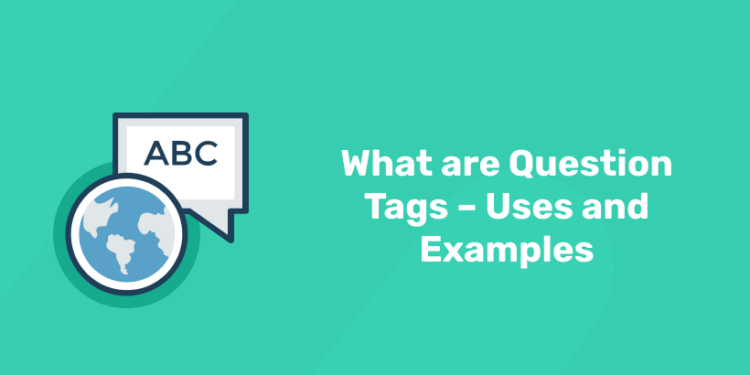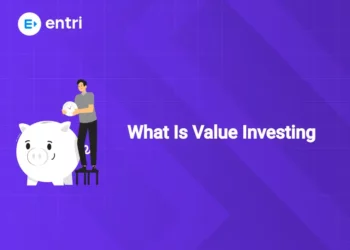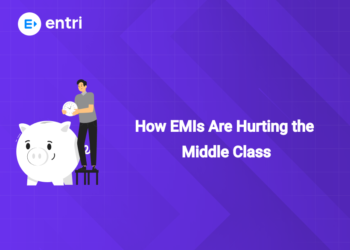Table of Contents
A question tag is a phrase that is added at the end of a statement, turning it into a question. It consists of an auxiliary verb ( “is”, “am”, “are” etc.) and a pronoun ( “you”, “we”, “they”, or “I”). They are used to confirm or check information or to seek agreement or disagreement from the listener. In this article we will discuss, What are Question Tags – its Uses and Examples in detail.
For example, in the statement “You are coming to the party, aren’t you?” the question tag “aren’t you?” is added to confirm whether the listener is coming to the party or not. Question tags can be used to express different emotions, attitudes, or intentions, depending on the tone and intonation used. They are common in spoken English and can be found in informal and formal contexts.
Elevate your speaking skills with our Spoken English Course!
What are Question Tags – Uses and Examples
Question tags are a type of grammatical structure in English that is used to turn a statement into a question. They are typically added at the end of a sentence, consisting of an auxiliary verb and a pronoun. Question tags are used to confirm or check information or to seek agreement or disagreement from the listener. In this way, question tags are a form of tag questions.
Types of Question Tags:
1: Which of the sentences below is grammatically correct?
There are several types of question tags that can be used in English. Here are some examples:
Affirmative question tags:
These are used when the statement is affirmative or positive. For example, “You like pizza, don’t you?” The question tag “don’t you” makes it a question and seeks confirmation from the listener.
Negative question tags:
These are used when the statement is negative. For example, “You don’t like pizza, do you?” The question tag “do you” makes it a question and seeks agreement or disagreement from the listener.
Softened question tags:
These are used to make a statement sound less direct or more polite. For example, “Excuse me, would you mind moving over a bit, please?” The question tag “please” is used to soften the request.
Upward inflection question tags:
These are used to express surprise or seek agreement from the listener. For example, “You’re from France, aren’t you?” The upward inflection at the end of the sentence signals that it is a question.
Downward inflection question tags:
These are used to seek confirmation or agreement from the listener. For example, “You’re not coming with us, are you?” The downward inflection at the end of the sentence signals that it is a question and seeks confirmation from the listener.
Spoken English Course for Guaranteed Confidence and Career Growth
Spoken English Course by Entri App: Enhance your communication skills, gain certification, and boost your career with confidence.
Join Now!Uses of Question Tags:
Question tags have a number of different uses in English, depending on the context and the speaker’s intention. Some of the most common uses include:
Seeking confirmation:
One of the most common uses of question tags is to seek confirmation or agreement from the listener. This is often done when the speaker is unsure about something and wants to check that their understanding is correct. For example, “You like pizza, don’t you?”
Softening a statement:
Question tags can also be used to soften a statement or make it less direct. This is often done to be polite or to avoid offending the listener. For example, “That’s not too much to ask, is it?”
Seeking disagreement:
Sometimes, question tags are used to seek disagreement from the listener, particularly if the speaker is expressing a controversial or unpopular opinion. For example, “You don’t really believe that, do you?”
Showing surprise:
Question tags can also be used to express surprise or disbelief. For example, “He’s not really going to do that, is he?”
Master pronunciation and fluency with our Spoken English classes.
Examples of Question Tags
Here are some examples of question tags in action:
1. “You’re going to the party, aren’t you?”
In this example, the speaker is seeking confirmation that the listener will attend the party.
2. “That was a great movie, wasn’t it?”
Here, the speaker is making a statement about the movie and seeking agreement from the listener.
3. “You wouldn’t want to miss this opportunity, would you?”
This example uses a question tag to suggest that the listener should take advantage of the opportunity.
4. “He’s not a bad singer, is he?”
In this case, the speaker is expressing surprise that someone they didn’t expect to be a good singer actually has some talent.
5. “It’s not too late to change your mind, is it?”
This question tag is used to suggest that the listener should reconsider their decision.
6. “You don’t really believe that nonsense, do you?”
Here, the speaker is expressing disagreement with the listener’s opinion and seeking a response.
7. “It’s cold outside, isn’t it?”
In this example, the speaker is stating that it’s cold outside and seeking agreement from the listener.
8. “You’re not hungry, are you?”
Here, the speaker is expressing doubt about whether the listener is hungry or not.
9. “You can speak French, can’t you?”
In this example, the speaker is assuming that the listener can speak French and seeking confirmation.
10. “He’s a doctor, isn’t he?”
In this case, the speaker is making a statement about someone’s profession and seeking agreement from the listener.
11. “She didn’t come to the party, did she?”
Here, the speaker is stating that someone did not attend a party and seeking agreement from the listener.
12. “You don’t mind if I join you, do you?”
In this example, the speaker is seeking permission to join the listener and using a question tag to soften the request.
Elevate your speaking skills with our Spoken English Course!
Corresponding Question Tags for Different Verbs
Here are some common verbs and their corresponding question tags:
1. “To be” (am, is, are, was, were)
- Affirmative: “You are happy, aren’t you?”
- Negative: “You’re not angry, are you?”
2. “To have” (have, has, had)
- Affirmative: “You have finished your homework, haven’t you?”
- Negative: “You haven’t seen the movie yet, have you?”
3. “To do” (do, does, did)
- Affirmative: “You like ice cream, don’t you?”
- Negative: “You don’t know the answer, do you?”
4. “To will” (will, won’t)
- Affirmative: “You’ll come to the party, won’t you?”
- Negative: “You won’t forget to call, will you?”
5. “To can” (can, can’t)
- Affirmative: “You can swim, can’t you?”
- Negative: “You can’t speak Spanish, can you?”
6. “To must” (must, mustn’t)
- Affirmative: “You must be tired, mustn’t you?”
- Negative: “You mustn’t be late for the meeting, must you?”
These are just a few examples of common verbs and their corresponding question tags. Remember that the choice of auxiliary verb and pronoun for the question tag depends on the tense, mood, and voice of the main verb in the statement.
Conclusion
In conclusion, question tags are a useful tool for English speakers to express a variety of intentions. Intentions include seeking confirmation, softening a statement, seeking disagreement, and showing surprise. By adding a question tag to a statement, speakers can engage their listeners and create more interactive and engaging conversations.
Join our Spoken English program today and communicate with ease!
Spoken English Course for Guaranteed Confidence and Career Growth
Spoken English Course by Entri App: Enhance your communication skills, gain certification, and boost your career with confidence.
Join Now!Question Tags – FAQs
1. How do I form a question tag?
Ans. Question tag is formed by adding an auxiliary verb and a pronoun at the end of a statement. For example, “You like pizza, don’t you?” In this case, “don’t” is the auxiliary verb and “you” is the pronoun.
2. What are some common auxiliary verbs used in question tags?
Ans. Some common auxiliary verbs used in question tags include “do,” “does,” “did,” “is,” “am,” “are,” “was,” “were,” “can,” “could,” “will,” “would,” “should,” and “must.”
3. What are the different uses of question tags?
Ans. Question tags can be used to seek confirmation, soften a statement, seek disagreement, and show surprise.
4. When should I use a question tag?
Ans. You can use a question tag whenever you want to engage your listener and seek their agreement, disagreement, or confirmation.
5. Can a question tag be used without an auxiliary verb?
Ans. No, a question tag requires an auxiliary verb in order to be grammatically correct. For example, “You like pizza, right?” is not a question tag because it does not include an auxiliary verb.
6. Do all English speakers use question tags?
Ans. Question tags are commonly used in English-speaking countries, but their frequency of use can vary depending on the region and the speaker’s level of formality.
7. Can a question tag be a complete sentence?
Ans. No, a question tag is not a complete sentence because it requires a statement to be added to it. For example, “It’s raining, isn’t it?” is a complete sentence because it includes a statement and a question tag.











